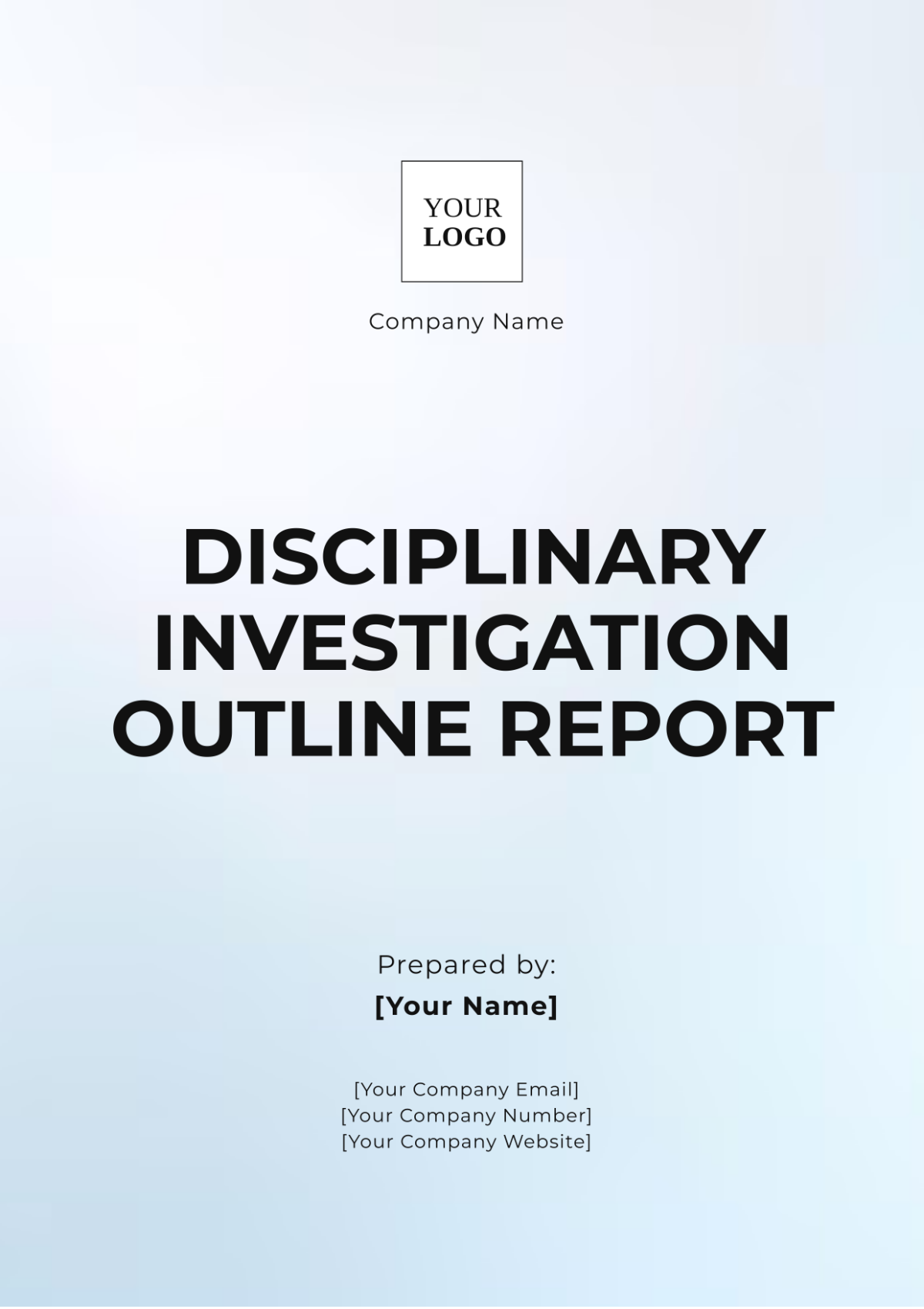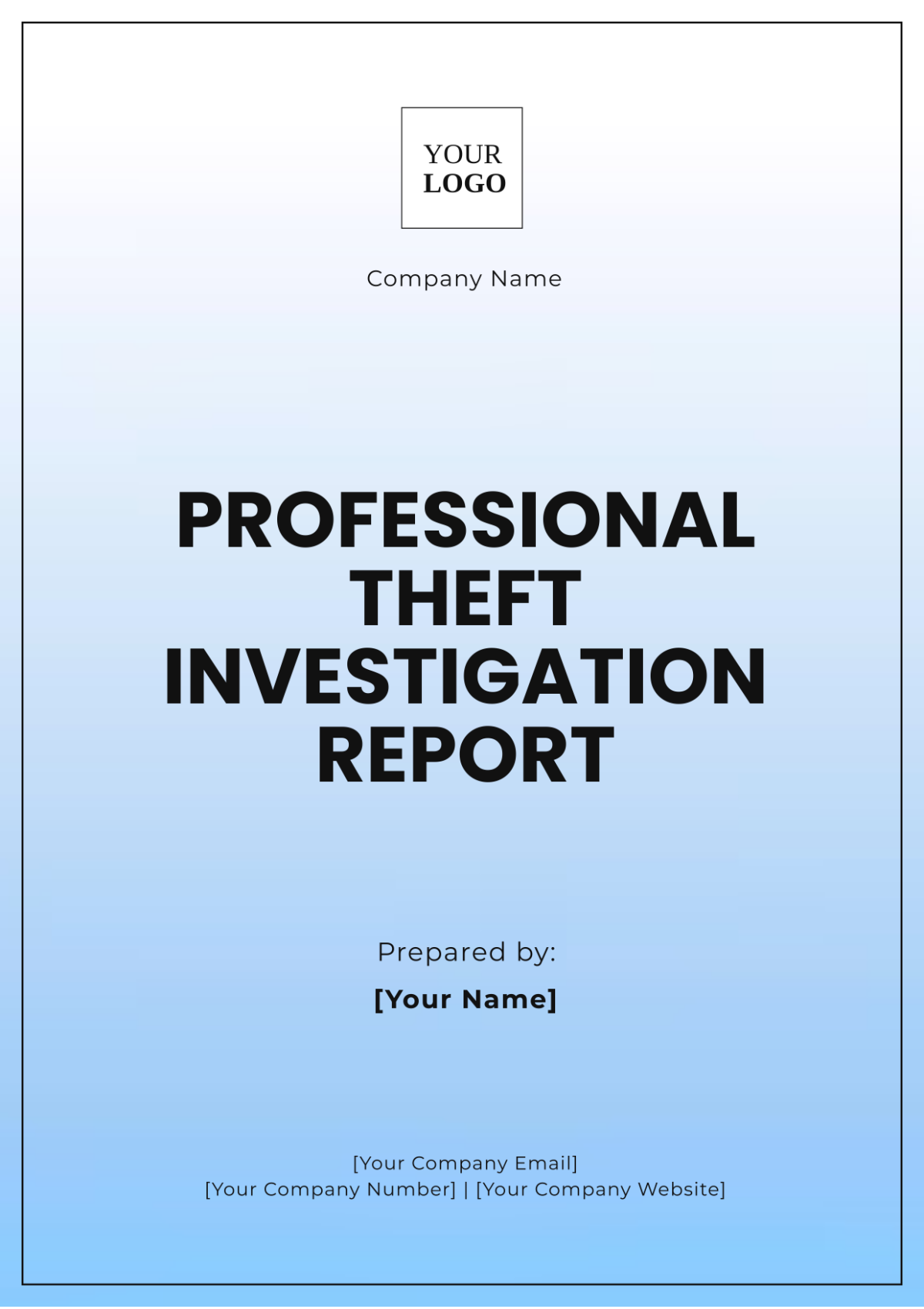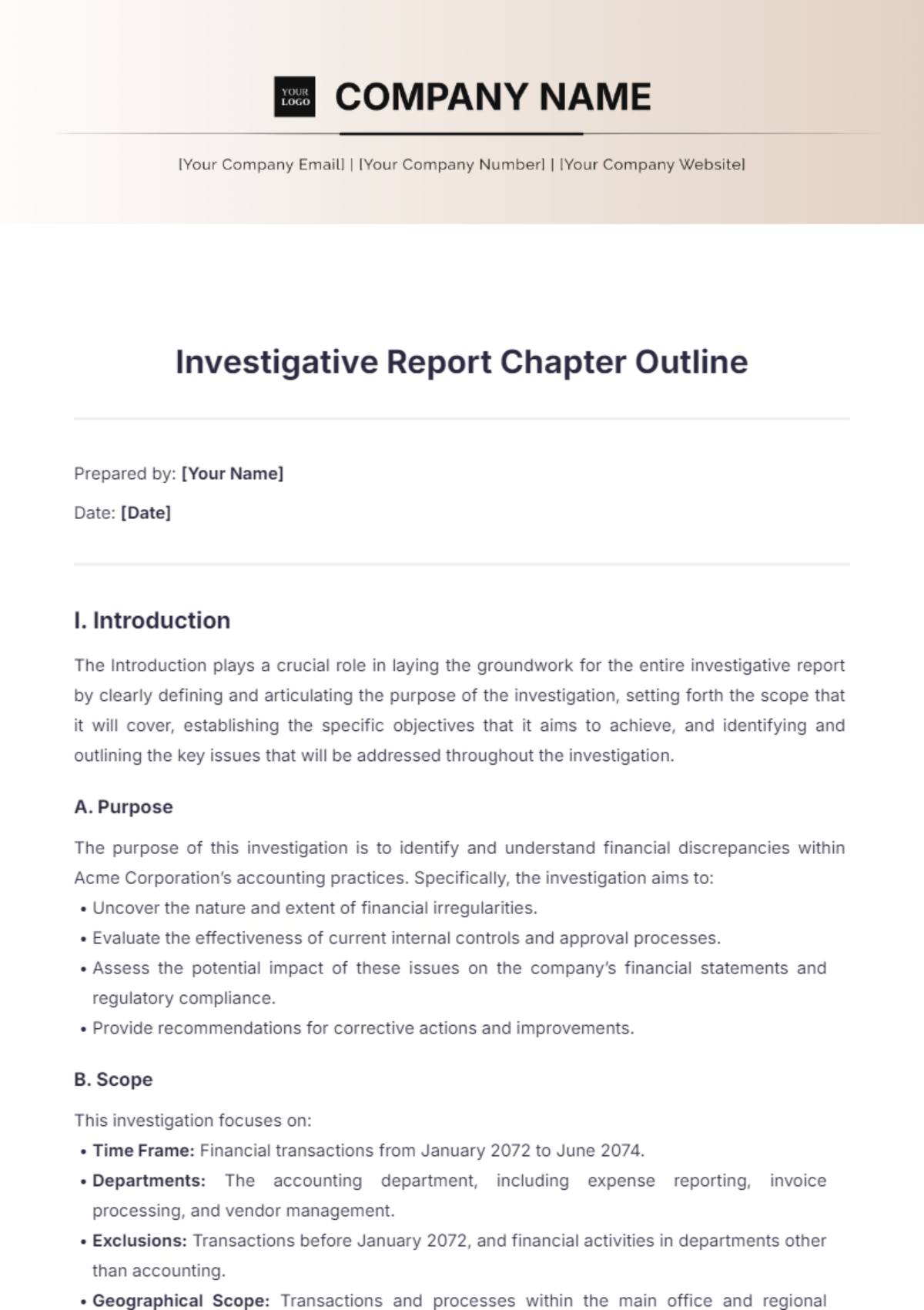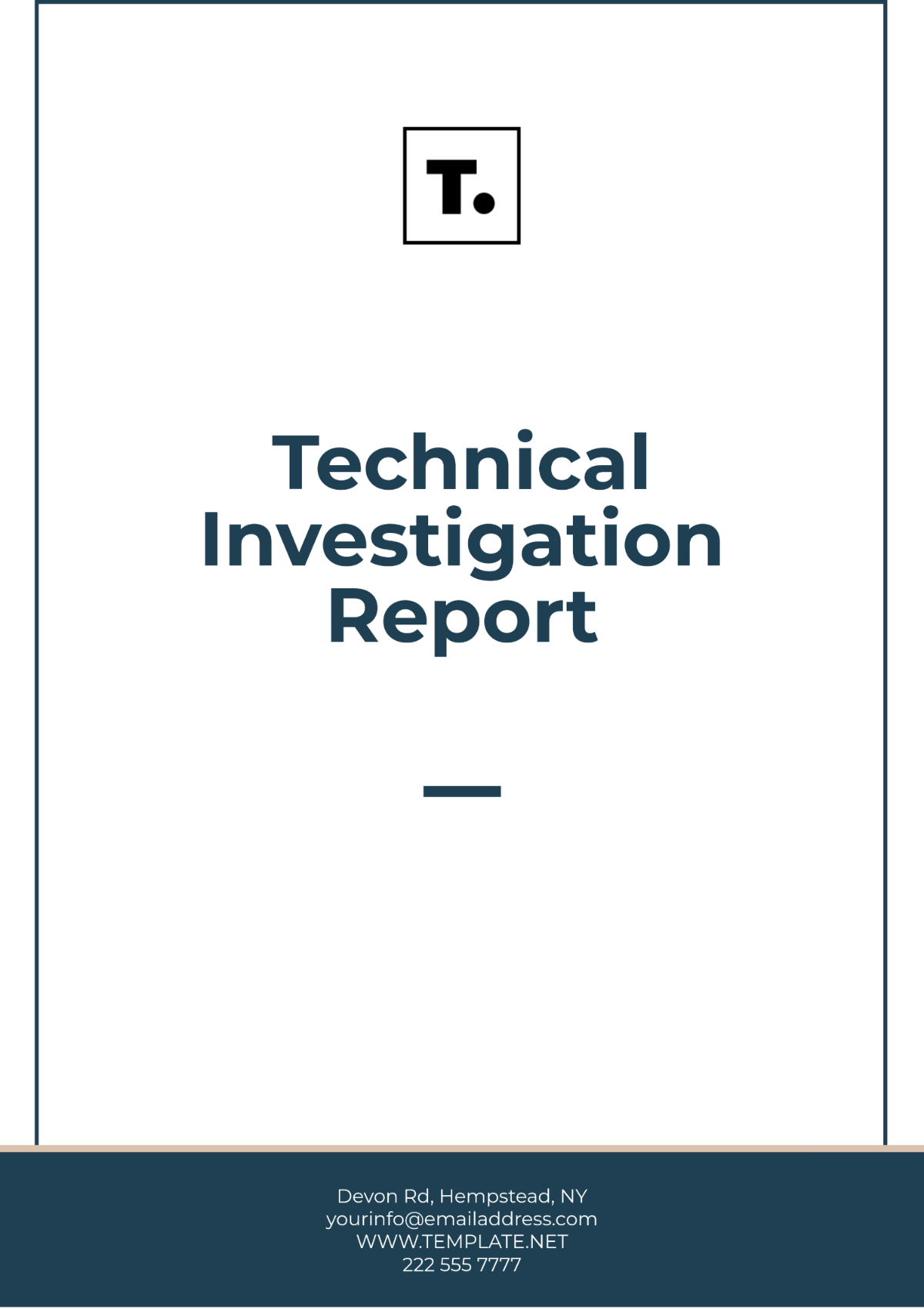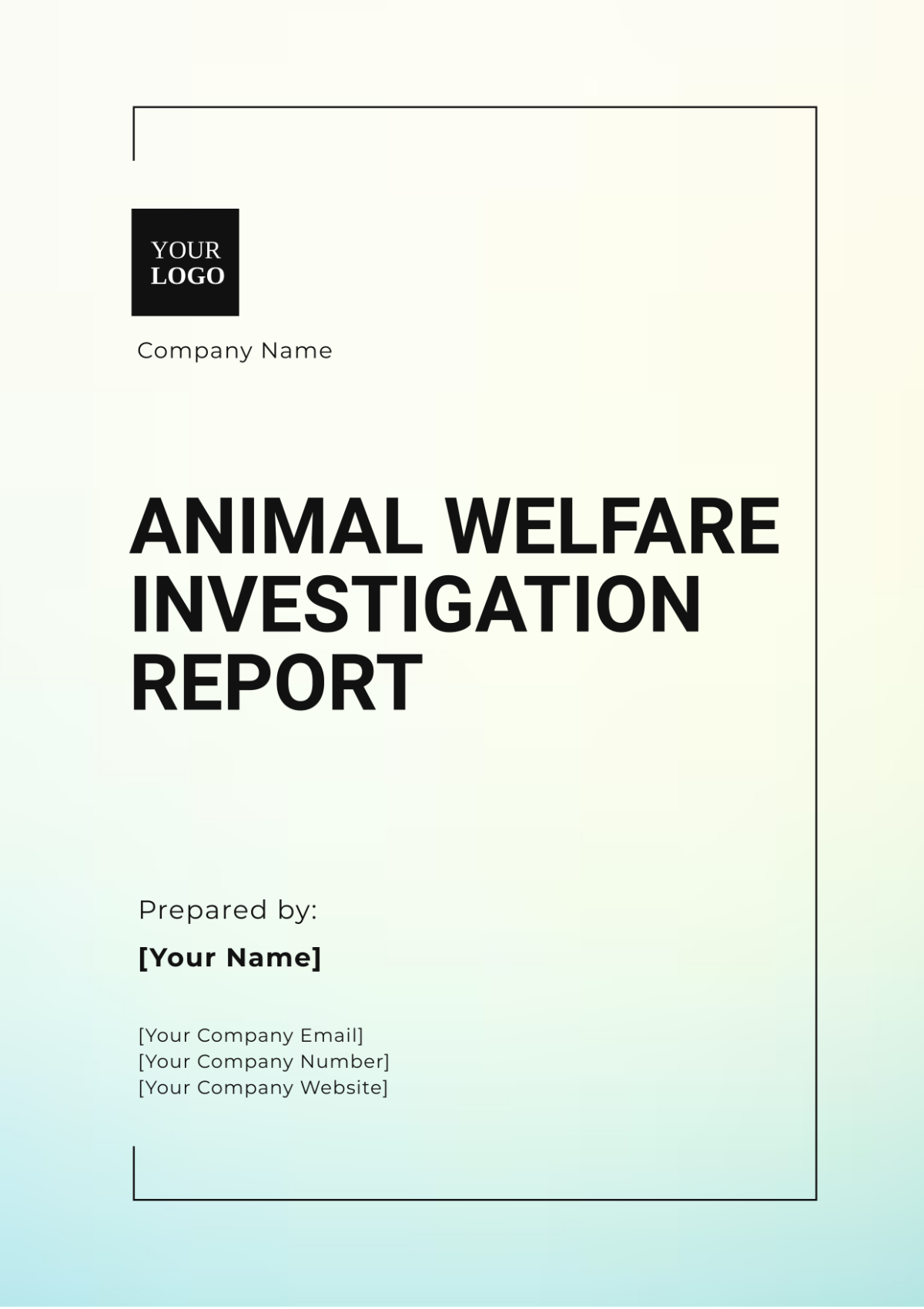Disciplinary Investigation Outline Report
I. Introduction
Purpose of the Report: This section outlines the intent of the report, detailing the objectives and expected outcomes of the investigation.
Scope of the Investigation: A clear definition of the boundaries of the investigation, including what will be covered and what will not.
Background Information: The context surrounding the issue at hand, including the nature of the allegations, relevant incidents leading to the investigation, and the parties involved.
II. Investigation Process
A. Initiation of Investigation
Description of the complaint or allegation, including the date it was filed and the individual(s) involved.
Relevant policies and procedures that govern the investigation process, referencing specific organizational guidelines.
B. Investigation Team
Composition of the investigation team, including names, titles, and relevant experience.
Roles and responsibilities of each team member, detailing their specific functions throughout the investigation.
C. Timeline of the Investigation
Key dates and milestones of the investigation, including initiation, key interviews, evidence collection periods, and final report submission.
Duration of the investigation, including any delays and reasons for such delays.
III. Evidence Collection
A. Interviews
List of Individuals Interviewed: Names and positions of all parties interviewed, including complainants, witnesses, and those accused.
Interview Process and Methodology:
Description of the interview format (e.g., structured, semi-structured) and any tools used (e.g., questionnaires, recording devices).
An explanation of how interviewees were selected and approached.
B. Documentation
Types of Documents Reviewed: List of documents examined, such as emails, internal reports, personnel files, and relevant policies.
Collection Methods and Sources: Details on how documents were collected (e.g., requests, subpoenas) and from whom.
C. Physical Evidence
Description of any physical evidence collected during the investigation (e.g., items related to the incident, security footage).
Explanation of how this evidence was preserved and documented.
IV. Findings
A. Summary of Facts
A comprehensive outline of the key facts established during the investigation, clearly distinguishing between verified facts and unsubstantiated claims.
B. Analysis of Evidence
Assessment of the credibility and relevance of the collected evidence, identifying any corroborating or conflicting evidence.
Correlation between established facts and applicable policies or regulations, explaining how findings relate to organizational standards.
C. Conclusions
Overall findings regarding the allegations, detailing whether they were substantiated, partially substantiated, or unsubstantiated.
Consideration of mitigating circumstances or additional context that may affect the conclusions drawn.
V. Recommendations
A. Disciplinary Actions
Suggested disciplinary measures for the individual(s) involved if the allegations are substantiated, including types of actions (e.g., reprimand, suspension, termination).
Consideration of any progressive discipline policies in place.
B. Policy Improvements
Recommendations for policy changes or updates to prevent similar incidents in the future, including suggested amendments to existing policies or the creation of new ones.
C. Additional Training
Suggested training programs for staff or management to address gaps in knowledge or understanding related to the incident, promoting a culture of compliance and ethics.
VI. Confidentiality and Reporting
A. Confidentiality of the Investigation
Explanation of confidentiality protocols followed during the investigation, including measures taken to protect the identities of involved parties.
Assurance that the investigation was conducted with sensitivity to privacy concerns.
B. Distribution of the Report
List of individuals or departments receiving the report, specifying who will have access to the findings and recommendations.
Explanation of how the report will be shared (e.g., printed copies, electronic distribution) and any restrictions on its use.
VII. Appendices
A. Interview Transcripts
Copies of transcripts or notes from interviews conducted during the investigation, redacted where necessary for confidentiality.
B. Document Copies
Relevant copies of documents reviewed as part of the investigation, including emails, policy documents, and any other pertinent materials.
C. Relevant Policies and Procedures
Copies of organizational policies and procedures that were referenced or evaluated during the investigation.
VIII. Conclusion
Summary of key findings and recommendations, reiterating the primary conclusions drawn from the investigation.
Closing remarks on the investigation process, emphasizing the importance of maintaining a fair and just workplace environment, and any next steps that may be necessary following the investigation.





